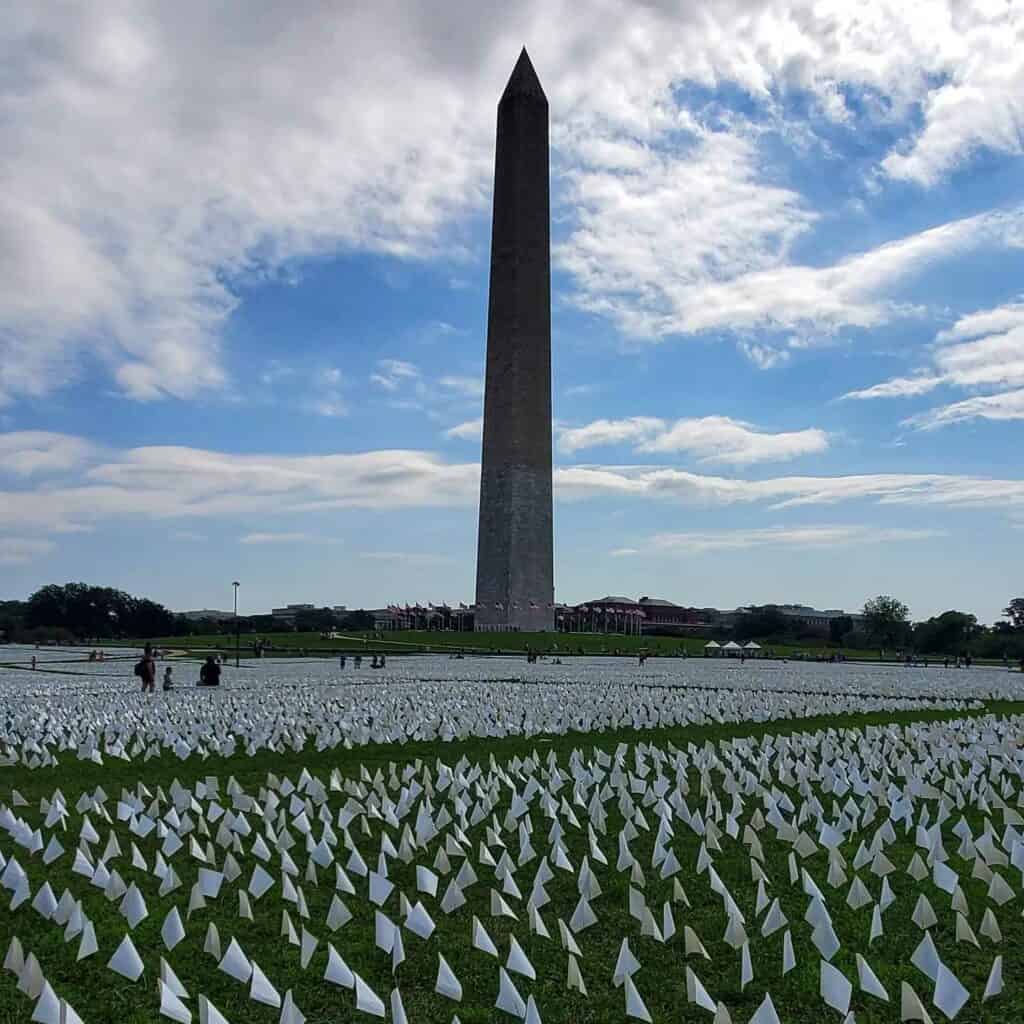This past weekend, I visited In America: Remember, an outdoor art installation on the National Mall in Washington, DC, by Suzanne Brennan Firstenberg, a DC-based artist. The exhibition, featuring over 675,000 small white flags (as of September 21), spans numerous acres on the grounds of the Washington Monument. Each simple, crisp white flag represents a person lost to the COVID-19 crisis in America. I had the solemn privilege of adding a name to a flag in honor of a Floridian who lost her battle to COVID. She was only 46 years old and left behind two young children.
Usually, memorials are erected to honor and remember major events or people, or both. As the United States continues to battle the spread of the coronavirus, as well as the spread of disinformation, the exhibit offers grieving loved ones and many others a moment to honor, remember and reflect on these past 18 months of stressful, tumultuous pandemic life in the United States.
This installation, on one of the most recognizable and culturally significant public spaces in the country, exists at the intersection of art, health, healing and social justice. In America: Remember was an incredibly moving example of pandemic creative placemaking that illustrates the enormity of loss as well as tenacity to process the impact of the pandemic on people and communities.
As a young sociology student many years ago in college, I recall asking the chairperson of the department why art was even necessary for society (from a functionalist sociological perspective) and his response was that art functions to bring stability to our lives to sustain us. Art brings enjoyment and can allow us to process our emotions for healthy mental balance. We need art in order to feel something.
As entire communities across the country process significant loss and community-level trauma, purposeful public art, which is the essence of responsive creative placemaking, is popping up all around the country, even in the age of social distancing. Community and third spaces are transforming to offer opportunities for grieving, reflection, beauty and advocacy.
Los Angeles origamist Karla Funderburk began folding and saving one paper crane for each person lost to COVID-19 as a means of processing the loss early in the pandemic. What began as a personal mental health moment turned into an international community project of paper origami cranes titled “A Memorial for COVID-19 Victims.”
In St. Petersburg, Florida, photographer Cathy Tobias conceived of the We Remember Them Memorial at the Morean arts center featuring colorful chains of ribbons memorializing those lost to COVID in Florida.
Last summer, COVID-19 brought New York City to an almost standstill. Recognizing the function of purposeful public art, the Public Art Fund collaborated with local artists to create Art on the Grid. The citywide exhibition featured artwork on bus shelters and transit kiosks calling attention to both the COVID-19 pandemic and the crisis of systemic racism with themes around loss, community and healing.
With the rise of Delta and other potential COVID-19 variants, it’s become abundantly clear that inching our way out of this national health crisis will take longer than initially expected. Utilizing art to process loss, explore themes of inequity in health and advocate for a more just society has a much-needed place in the creativity and function of community.
Karen Kali is NCRC’s senior program manager of special initiatives.
Photo courtesy of Karen Kali.



